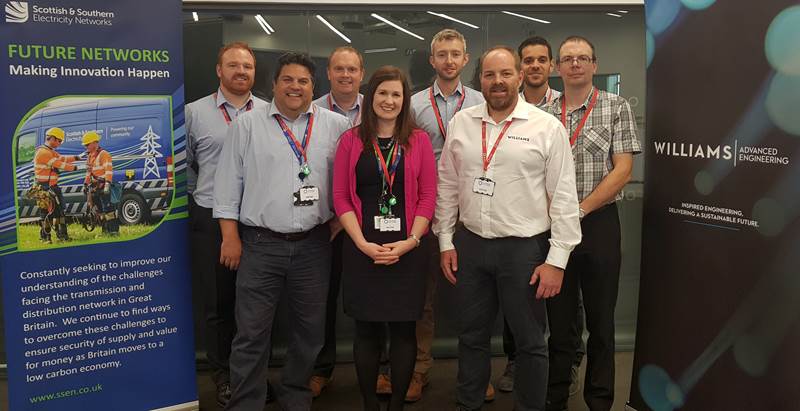Study outlines potential growth of low-carbon technologies
A "future energy scenario analysis" study undertaken by REGEN, has mapped out the potential growth of low-carbon technologies in Scottish Southern Electricity Networks (SSEN) southern licence area.
20th February 2019 by Networks

The study, published on Friday, provides a snapshot of what the energy system might look like in 2032 in four different scenarios:
- Community Renewables, which explores how the 2050 decarbonisation target can be achieved through a more decentralised energy landscape with high levels of smaller scale, local and domestic activity.
- Two Degrees, which explores how the decarbonisation target can be achieved with a focus on larger and more centralised technologies. This scenario features changes to the energy landscape such as hydrogen heating networks and large-scale transmission connected generation technologies such as nuclear and offshore wind.
- Consumer Evolution, which is a decentralised scenario that makes progress towards the decarbonisation target but fails to achieve the 80% reduction by 2050. Deployment is focused on smaller scale, local and domestic projects.
- Steady Progression, which is a centralised scenario that makes progress towards, but does not meet, the 2050 decarbonisation target. In the timescale of this study, the scenario sees very low deployment of renewable technologies with gas generation continuing to play a significant role.
Under the scenario that the UK meets its 2050 decarbonisation targets, through a more decentralised energy system, south central England could see:
- 40% of new homes built with solar panels;
- Half of all cars electric by 2032, with all new homes built with a 7kW charger;
- 70% of new houses built with a heat pump by 2032; and
- Nearly 10% of homes could have a 5kW domestic battery for energy storage.
According to the company, the study is an important step in the process of SSEN becoming a distribution system operator (DSO). It is part of providing better visibility of the network for market participants as SSEN works to deliver a smarter grid.
Stewart Reid, head of DSO and innovation at SSEN, said: “Visibility will be key to delivering a flexible network, that encourages and facilitates customer engagement. REGEN’s study is a welcome contribution to our understanding of the potential changes facing SSEN’s networks, and the wider opportunities that will be unlocked.
“SSEN will continue to act in a transparent and open manner as we take the necessary steps to deliver on our goal; to be a neutral facilitator supporting the access of low-carbon, cost-efficient and flexible technologies to our network.”
Going forward SSEN intends to analyse how these distributed demand and generation connections, will operate and identify potential services they can provide. This will give a picture of the cumulative impact of the four scenarios on their network, both identifying the potential network constraints that result and the opportunities for mitigating those constraints through flexibility.
This understanding will then be used to assess the costs and benefits of the full range of network solutions, from investment in new assets, to managing constraints through securing flexibility services.
Comments
Login on register to comment
Related content

Gas
Cadent backs launch of major bio-CNG HGV refuelling station
Gas network’s £250,000 infrastructure investment ensures supplies to existing connected customers have not been impacted

Gas
Editor’s blog: The biggest tests of resilience are yet to come
Network content director Jane Gray reflects on the industry's coronavirus response to date and the challenges still to come.

Gas
From the front line: Chris Garside and Andy Simcoe, Northern Gas Networks
Key workers across the power and gas networks are playing a critical role in the national response to Coronavirus. Network has committed to profiling their stories.
Related supplier content

Power
Load patterns and lockdown: how Covid-19 is impacting electricity networks
Insights into dynamics on the low voltage network as the outbreak unfolds

Downloads
Protect electrical equipment from insulation failure
Insulation faults are a major cause leading to the eventual failure of electrical equipment. Partial discharge (PD) is a very reliable indicator of developing insulation faults. Regular PD testing allows users to detect and analyze PD activity

Heat
How E.ON. is helping the City of London become a zero emissions city
Discover Citigen. Deep in the heart of our bustling capital